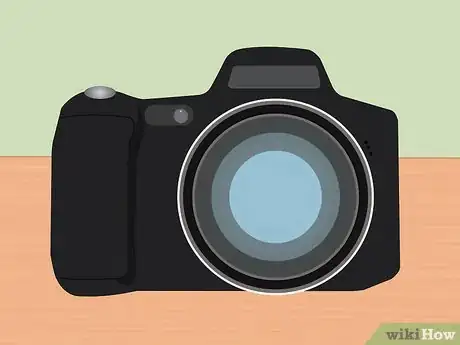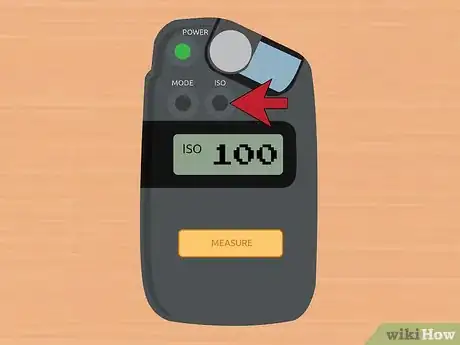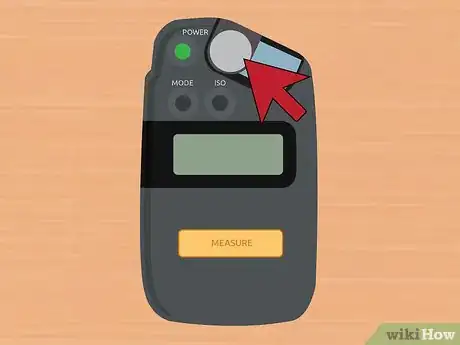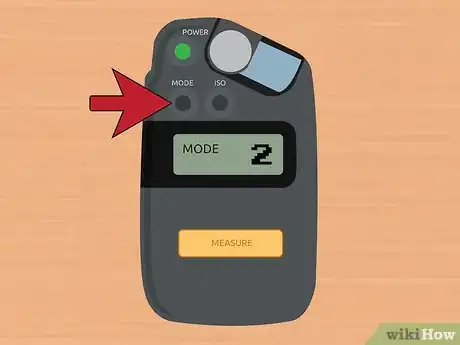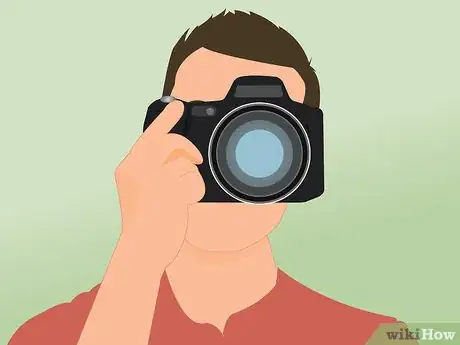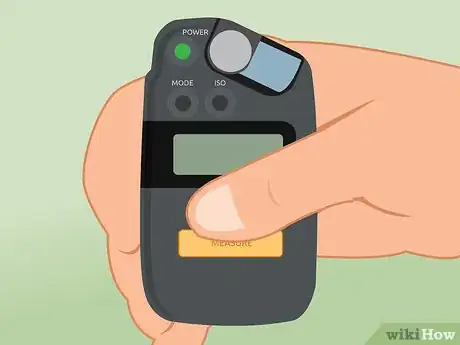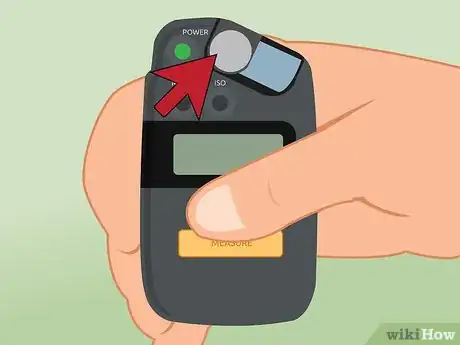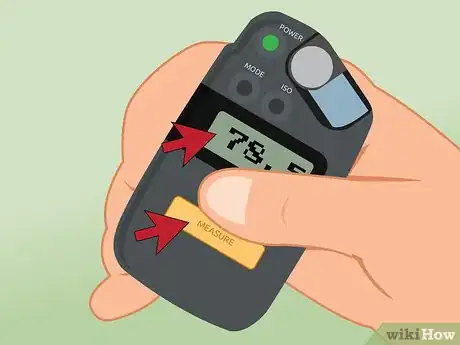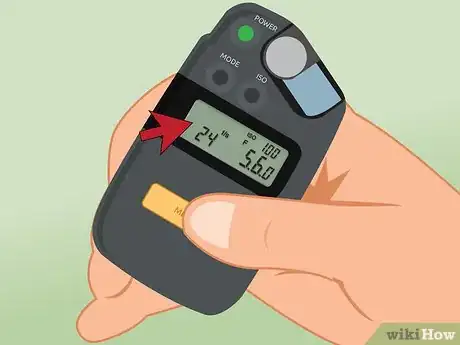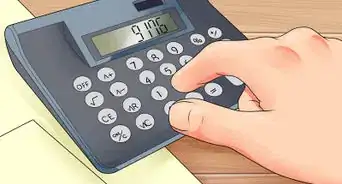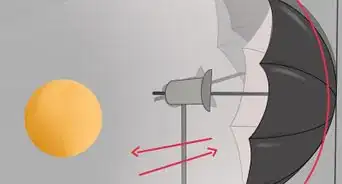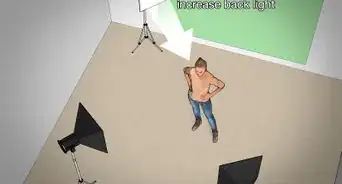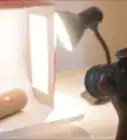This article was co-authored by Crystal Bear. Crystal Bear is a Professional Photographer and the Owner of Summer Bear Photography. Crystal specializes in weddings and portraits for women. She holds a BS in Interior Design and Consumer Science from San Francisco State University. Coming from a design background, Crystal brings a sense of style and artistry to her work that brings out her client’s inner confidence, showcases their beauty both inside and out, and puts them at ease. She also specializes in using the correct lighting and branding for women entrepreneurs.
This article has been viewed 73,807 times.
Learn how to use a handheld light meter to get consistently exposed photos. Although digital cameras have in-camera meters, the in-camera meter can meter the wrong area in the image or it can read the light reflecting off certain colors in the image incorrectly, resulting in a poorly exposed picture. A handheld light meter will read the light at the point of intended exposure with much greater accuracy, and can be used with a digital or non-digital camera.[1] This added step to your photo taking process will produce better quality photos without the need for a lot of post-editing on the computer.
Steps
Setting up an Analog Light Meter
-
1Prepare your camera. Go into the settings of your camera and set it to manual mode, if it isn't in that mode already. Set your camera to your preferred ISO and aperture settings. You'll need to do some experimenting with both of these settings to find the ideal settings for the photo you're trying to get.[2]
- The ISO setting determines your camera's sensitivity to light. The higher the ISO, the more sensitivity to light. Generally, lower ISO settings produce clearer pictures while a higher ISO will cause graininess, but there are some scenarios where you'll need a higher ISO, such as when shooting a subject in motion.[3]
- The aperture setting changes the size of the lens, and therefore how much light the camera lets in. This setting is describes using the unit f/stops. A larger aperture number, like f/11, means a smaller lens size, and a smaller number, like f/1.4, means a larger lens size. Aperture affects your photos' depth of field and shutter speed.[4]
-
2Input the ISO number and aperture into the light meter. For whatever ISO your camera is set at, input that number into the allocated spot on the light meter. Do the same with the aperture that your camera is set at.[5]Advertisement
-
3Prepare the sensor of the light meter. Depending on what light meter you are using, you may need to twist the knob around the white dome on your light meter to prepare it. This is the sensor of the light meter.[6]
-
4Set your light meter to the appropriate mode. Most light meters have two modes, one for ambient light and one for flash. If you're going to be using the flash of your camera, set it to that mode, and if not, use ambient.
Using the Light Meter
-
1Hold the camera up to your eye. Look through the viewfinder and focus on your intended subject.
-
2Place the light meter out in front of you or have a friend hold it at the distance of the subject of the photo. If you are taking a photo of a person, have the person hold the meter up to his or her forehead. This pulls the light reading from the exact spot you want in correct exposure.[7]
-
3Aim the sensor of the light meter at the camera. The sensor is the white dome-shaped area of the meter. It is often on a swiveling or rotating head. Point it straight at the lens of the camera for the best results.
-
4Press the measure button on the light sensor. This will measure the amount of light falling on the subject.
-
5Fire the flash on the camera. If you're using your flash to capture your subject, and you've set your light meter to flash mode, you'll need to hit the measure button while the camera is flashing. The meter will evaluate the degree of light from the flash and determine the correct aperture and shutter speed for the subject.[8]
-
6Find the camera settings that the light meter reads out. After hitting the measure button, most light meters will allow you to then scroll through the combinations of shutter speeds and apertures that are appropriate for the amount of light measured.
-
7Select the appropriate settings on the camera. The meter supplied you with aperture and shutter speed readings for correct exposure of the photograph based on the light at the location of the subject. Go to the settings in your camera and input the numbers provided by your light meter into your camera.[9]
- Adjust the numbers from the light meter to achieve alternative image results. Input a higher aperture (a lower f-stop number) for an image that reveals more light. A lower aperture (a higher f number) will darken the image. You can also alter the shutter speed, which allows more light in with a slower speed and increases potential blurring of any moving things in the scene.
Expert Q&A
Did you know you can get expert answers for this article?
Unlock expert answers by supporting wikiHow
-
QuestionHow does a light meter work?
 Crystal BearCrystal Bear is a Professional Photographer and the Owner of Summer Bear Photography. Crystal specializes in weddings and portraits for women. She holds a BS in Interior Design and Consumer Science from San Francisco State University. Coming from a design background, Crystal brings a sense of style and artistry to her work that brings out her client’s inner confidence, showcases their beauty both inside and out, and puts them at ease. She also specializes in using the correct lighting and branding for women entrepreneurs.
Crystal BearCrystal Bear is a Professional Photographer and the Owner of Summer Bear Photography. Crystal specializes in weddings and portraits for women. She holds a BS in Interior Design and Consumer Science from San Francisco State University. Coming from a design background, Crystal brings a sense of style and artistry to her work that brings out her client’s inner confidence, showcases their beauty both inside and out, and puts them at ease. She also specializes in using the correct lighting and branding for women entrepreneurs.
Professional Photographer A light meter is an external device that you can actually place on your subject to read the light where the subject is. The meter will tell you what your aperture, shutter speed, and ISO need to be set at. Or, you can tell your light meter what ISO you're at, and then it will tell you what your shutter speed and aperture need to be. It's an easy way to tell the camera exactly what settings to be on because sometimes the internal sensors on digital and film cameras aren't 100% accurate.
A light meter is an external device that you can actually place on your subject to read the light where the subject is. The meter will tell you what your aperture, shutter speed, and ISO need to be set at. Or, you can tell your light meter what ISO you're at, and then it will tell you what your shutter speed and aperture need to be. It's an easy way to tell the camera exactly what settings to be on because sometimes the internal sensors on digital and film cameras aren't 100% accurate.
Things You'll Need
- Light meter
- Camera
References
- ↑ Crystal Bear. Professional Photographer. Expert Interview. 21 January 2021.
- ↑ http://www.digital-photo-secrets.com/tip/3335/how-to-use-a-hand-held-light-meter/
- ↑ http://www.digitaltrends.com/photography/what-is-iso-camera-settings-explained/
- ↑ http://www.nikonusa.com/en/learn-and-explore/article/g3cu6o1r/understanding-maximum-aperture.html
- ↑ http://www.digital-photo-secrets.com/tip/3335/how-to-use-a-hand-held-light-meter/
- ↑ http://www.digital-photo-secrets.com/tip/3335/how-to-use-a-hand-held-light-meter/
- ↑ Crystal Bear. Professional Photographer. Expert Interview. 21 January 2021.
- ↑ https://www.ephotozine.com/article/guide-to-using-a-hand-held-light-meter-4748
- ↑ Crystal Bear. Professional Photographer. Expert Interview. 21 January 2021.
About This Article
Before you use a light meter, put your camera in manual mode, then set it to your desired ISO. Input that ISO into your light meter, prepare your light meter’s sensor, and set the meter to either ambient or flash, depending which you’re using. Hold the camera to your eye and place the light meter near the subject you’re photographing. When you’re ready, aim the sensor at the camera lens, then press “measure.” The sensor will give you a recommended shutter speed and aperture, so input those settings into your camera. To learn how to adjust your ISO based on the effect you want, keep reading!

